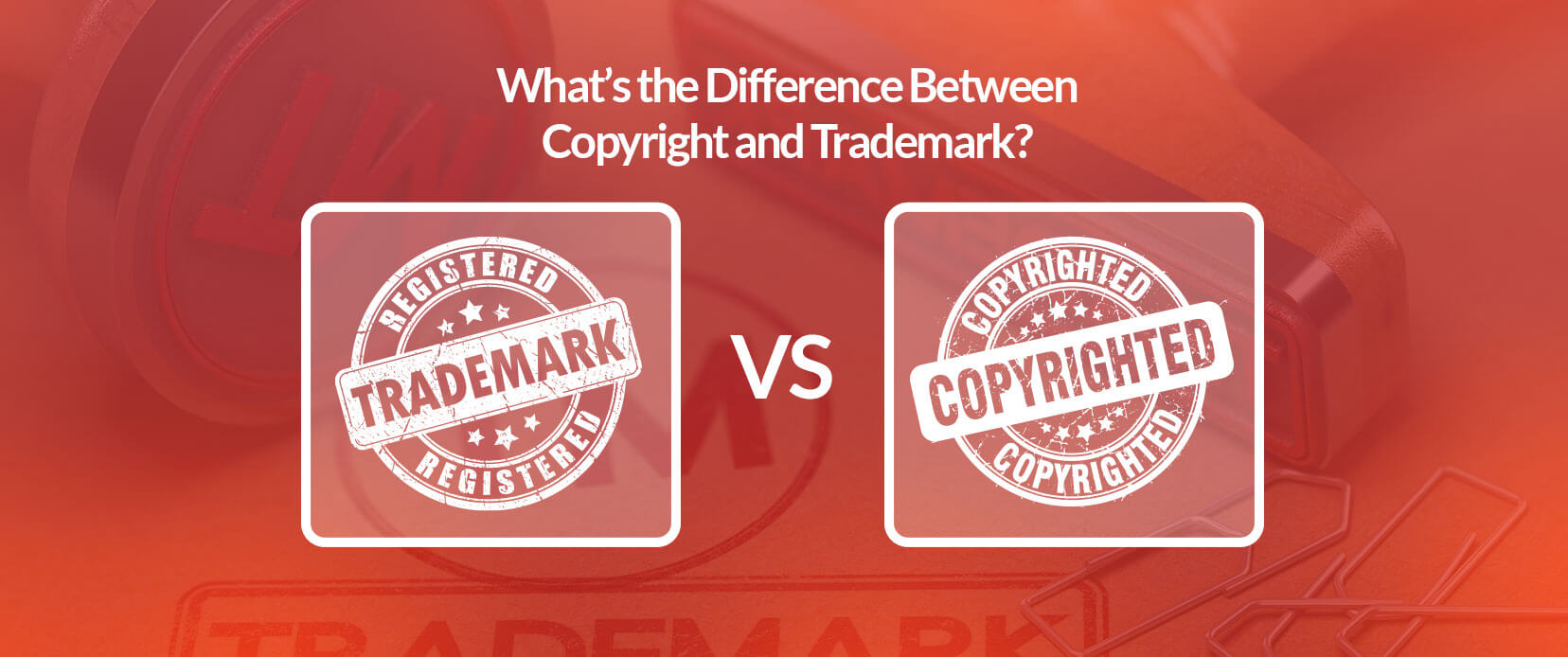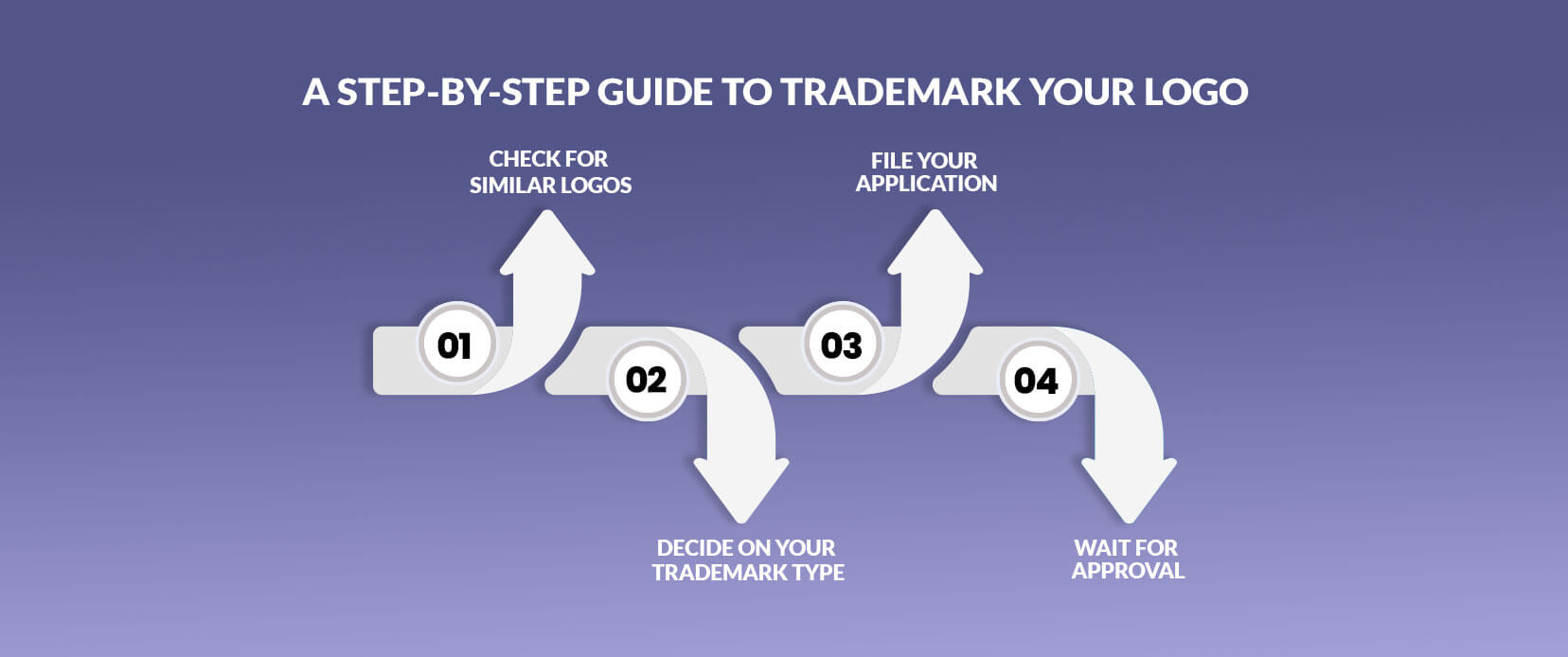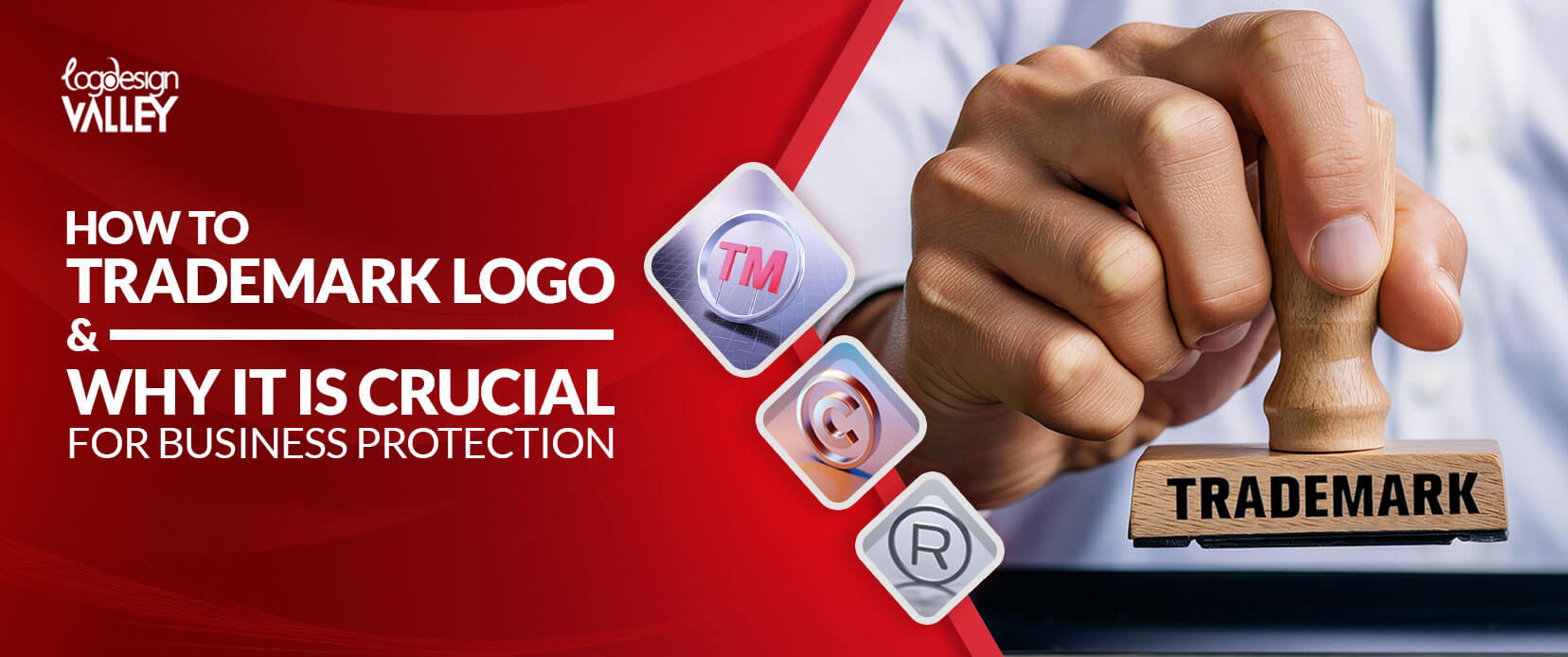Ever wondered why your favorite brands seem so invincible? It’s not only regarding what they offer or provide but also about their brand image. A critical aspect of their identity is their logo.
A logo is not just a nice image; it represents your business and distinguishes you from others. Trademarking your professional logo design secures your brand identity and prevents unauthorized use.
Why is it crucial to trademark? Picture someone replicating your logo and utilizing it to market substandard products or services in your brand’s name. This could not only harm your reputation but also cause confusion among customers and possibly result in legal disputes.
In this blog post, we will walk you through the process of trademarking your logo and illustrate the importance of this financial commitment for your company.
What is a Trademark? A Simple Explanation
What exactly is a logo? In a nutshell, it’s a one-of-a-kind identifier for your business. It functions as a sign, a term, or a layout that helps people remember and identify your brand. Consider it a facial feature of your enterprise.

Why does it matter to guard your logo? Visualize a person recreating your logo and utilizing it for the sale of either fake or inferior products. This can lead to confusion among customers and deteriorate your reputation. That’s where trademarks make an entry.
A trademark is a legal method to secure your logo and all other brand identifiers. Think of it as a barrier that declares, ‘I own this brand, and no one else may use it.’ Claiming your logo through trademarking essentially conveys the message, “This belongs to me.
Registered Trademarks vs Common Law Trademarks
Have you ever known the term “common law trademark?” Even though ‘registered trademark’ is more commonly understood, understanding the underpinning of this term is equally important.
Trademarks registered under the law have been filed at the United States Patent and Trademark Office (USPTO). They are given protection nationwide thanks to this, and it receives legal acknowledgment. Think of it as a legal document for your brand.
Ready to take action?
Let our expert team guide you through the trademarking process. Contact us today for a free consultation.
On the other side, typical trademark systems of common law are not officially registered. Instead, they are generated when they are used. In the realm of business, using a specific logo or brand name can often create rights to a common law trademark. Nonetheless, common law trademarks extend only modest protection beyond your designated geographical area.
Therefore, what choice is better? Traditionally, it is best to use registered trademarks. They deliver better security and simpler enforcement processes, and they can help prevent other entities from using similar marks throughout the country. For novice small businesses, a common law trademark can be a worthwhile temporary step to take while seeking official registration of their mark.
What’s the Difference Between Copyright and Trademark?
Copyright and trademark provide protection for intellectual property, although their functions vary.
Copyright safeguards unique creations by authors, like books, articles, music, and software. It provides the author with sole rights to copy, distribute, present, exhibit, and develop adaptations of their creation. Fundamentally, copyright safeguards the representation of a concept.

Trademarks safeguard words, symbols, or designs used to distinguish merchandise or services. It stops others from using marks that are confusingly similar and could deceive consumers. Trademarks safeguard a business’s brand identity and reputation.
What is a Patent? A Quick Guide
A patent is a unique permit that grants you the sole authority to create, utilize, market, or present for sale your creation. It’s saying, This idea belongs to me, and no one else is allowed to replicate it. Consider it a prize for creating something innovative and beneficial. Having a patent will enable you to stop others from profiting from your invention.
Trademark vs Copyright vs Patent: Breaking Down the Differences
| Feature | Trademark | Copyright | Patent |
| Protects | Words, symbols, or designs that identify goods or services | Original works of authorship | Inventions |
| Purpose | Prevents consumer confusion | Protects the expression of an idea | Grants exclusive rights to an invention |
| Examples | Logos, brand names, slogans | Books, music, software, art | Machines, processes, products |
| Scope | Nationwide protection | Nationwide protection | Varies by country |
| Duration | Potentially indefinite, subject to renewal | Life of the author plus 70 years (in the US) | 20 years from the filing date |
| Enforcement | Legal action for infringement | Legal action for infringement | Legal action for infringement |
A Step-by-Step Guide to Trademark Your Logo
Obtaining a trademark for your logo may appear challenging, but it is a necessary measure to safeguard your brand’s identity. Are you prepared to protect your logo and differentiate yourself from competitors? Let’s go through the process one step at a time.

Check for Similar Logos
Initially, it is important to ensure that someone else does not utilize a comparable logo. Perform a comprehensive trademark search with the help of online resources, or consider hiring a professional to prevent potential legal problems in the future.
Decide on Your Trademark Type
Are you registering solely the design or a blend of words and symbols? Understanding if you require a “wordmark,” “design mark,” or both is crucial.
File Your Application
After you are prepared, you must submit an application to the correct trademark office. In the United States, this process would be carried out through the United States Patent and Trademark Office (USPTO).
Wait for Approval
Approval for trademarks may require several months; therefore, patience is necessary. The application will be examined by the office for any conflicts before the trademark is approved, provided everything is in order.
Securing your logo with a trademark is a worthwhile investment for your company. By making it secure, you are greatly safeguarding your brand for the future.
Common Reasons Logo Trademarks Get Rejected (And How to Avoid Them)
Have you ever questioned what makes certain logos successful while others are turned down? Being creative is important, but so is comprehending the rules in play.
A frequent reason why logos are rejected for trademarking is genericness. If your logo is too ordinary or descriptive, it could be deemed generic, making it potentially ineligible for trademark protection. A logo just reading “Pizza” would most likely be dismissed as too ordinary.
Yet another obstacle is an indistinguishable resemblance to existing trademarks. Should your logo be too similar to a previously registered trademark, it’s more likely to be kicked back. This is done to prevent misunderstanding amongst consumers.
Geographical limitations may also play a part. If your logo is very specific to a given region or place, it may not qualify for a nationwide trademark classification.
Ultimately, functional components can stop a trademark from being registered. If your logo has no role in representing your brand identity but is only functional, it may not be eligible for protection.
In order to avoid these problems, it’s important to do extensive research before filing your trademark application. Think about contacting a trademark attorney who can help you assess your logo and detect possible problems. Keep in mind that a logo that is carefully designed and stands apart is more probable to earn trademark protection and protect the identity of your brand.
Key Considerations Before Trademarking Your Logo
Before you dive into the trademarking process, it’s crucial to consider a few key factors.
Above all, make sure to carry out a comprehensive trademark search. This will assist you in identifying if your logo bears resemblance to any current trademarks. Resources such as the Trademark Electronic Search System (TESS) from the USPTO can help you with this task.
Next, make sure your logo stands out. A logo that is distinctive and easily remembered is more likely to be accepted for trademark registration. Refrain from using common or generic terms and designs.

Next, evaluate the extent of your trademark. Are you interested in protection at a national level, or are you satisfied with protection at a state level? The extent of your trademark’s reach will impact your application and costs.
Also, consider the future of your company. Will your logo be exclusive to one product or service, or will it be linked to various offerings? This will assist you in identifying the correct trademark category.
Lastly, remember to consider the expense. Registering a trademark requires payment of fees, the amount of which may fluctuate based on factors like the number of classes requested and the decision to employ legal representation.
By giving these factors proper consideration, you can improve the likelihood of your trademark application being approved.
Nike’s famous swoosh
The Famous Nike trademark symbol is now closely associated with the brand, symbolizing athleticism, speed, and innovation.
Adidas’ three stripes
The Adidas logo‘s parallel stripes have been a fundamental aspect of Adidas’ branding for many years, representing dynamism, vitality, and a dedication to excellence.
Starbucks’ iconic siren
The Starbucks logo is easily identifiable and brings about emotions of ease, calmness, and a cozy mug of coffee.
Barbie’s distinctive doll-shaped logo
The Barbie logo is a fun and girly symbol of the famous doll, attracting a broad range of people.
Instagram’s instantly recognizable camera
The symbol of visual storytelling and sharing is embodied by the Instagram logo, which represents the app’s main purpose.
Conclusion
Securing a trademark for your logo is essential to safeguarding your brand identity and stopping unauthorized usage. By grasping the distinctions among trademarks, copyrights, and patents and adhering to the instructions provided in this manual, you can adequately protect your intellectual property. Don’t forget that a powerful and unique logo is a priceless advantage for every company.





